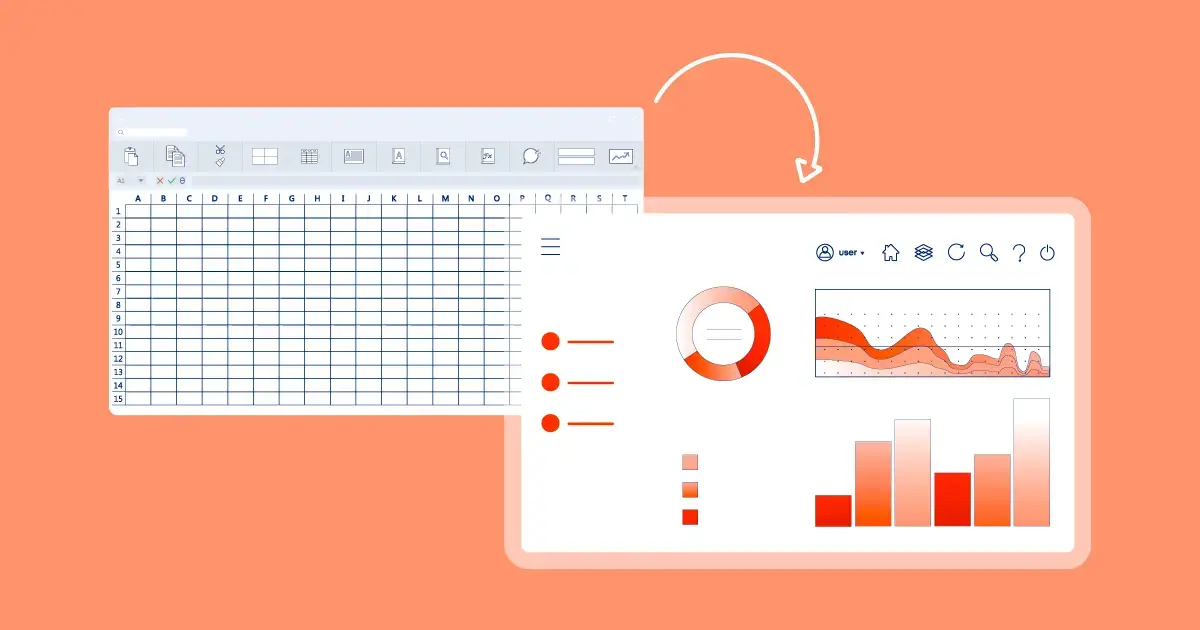Stop Managing CQV in Silos—Unify Your Validation Systems

.png)
Validation plays a foundational role in ensuring the safety, quality, and compliance of pharmaceutical and biopharmaceutical products. However, many organizations still rely on fragmented systems to manage their commissioning, qualification, and validation (CQV) efforts. These disjointed systems, often a mix of paper records, spreadsheets, and legacy software, hinder collaboration, increase the risk of compliance issues, and slow down project delivery. As the complexity of manufacturing processes and regulatory expectations continues to grow, unifying CQV processes in a centralized platform has become a strategic imperative.
This approach not only improves efficiency but also aligns with modern regulatory expectations and enables greater adaptability in a competitive market.
The Problem with Siloed Validation Systems
Hidden inefficiencies and data fragmentation
When CQV data is spread across multiple systems, teams face duplicated work, communication gaps, and frequent handoffs that slow everything down. For instance, equipment qualification data might be logged in a spreadsheet by engineering, while quality tracks outcomes in another system. This fragmented setup requires time-consuming reconciliations and introduces room for human error.
Redundant documentation and audit complexity
Protocols such as installation qualification (IQ), operational qualification (OQ), and performance qualification (PQ) can generate hundreds of pages per system. When these documents are managed across disparate systems, audit preparation becomes a significant burden. Teams may need to hunt through shared drives, local folders, and filing cabinets just to compile the required documentation for inspections. Audit preparation becomes a logistical challenge if documents are scattered across physical binders and disconnected databases. As noted in an ISPE Pharmaceutical Engineering article, inspection readiness improves when all validation-related records are consolidated and easily accessible (ISPE, 2023).
Risk of Noncompliance
Disconnected systems make it easier for critical tasks to fall through the cracks. Requalification steps may be missed after equipment changes, or deviations may go undocumented. These oversights are common causes of regulatory findings like FDA Form 483s and warning letters. Unified systems offer centralized oversight, built-in audit trails, and automated alerts that help prevent such issues.
“Central data management enhances transparency, lowers error rates, and simplifies compliance audits” (ISPE C&Q Community of Practice, 2025).
.png?width=1200&height=1133&name=image%20(18).png)
Why Regulators Support Unified Validation Platforms
Lifecycle validation and risk-based approaches
Both the FDA and EU regulators now advocate for lifecycle-based and risk-based validation. This approach involves assessing risk continuously throughout the product lifecycle—not just at the beginning or end. It places greater importance on tracking real-time performance data, identifying emerging risks, and updating control strategies accordingly. A unified validation system supports this by consolidating data inputs and outputs in one place, enabling seamless risk tracking, prioritization of critical activities, and proactive decision-making. For example, automated risk scoring tools within a unified platform can flag high-impact systems or processes that require more robust qualification protocols.
Computer software assurance and Annex 11
The FDA’s Computer Software Assurance (CSA) framework and EU Annex 11 outline clear expectations for electronic data integrity, audit trails, and secure user management (ISPE, 2022).. Validating several systems independently to meet these standards adds complexity, increases costs, and prolongs project timelines. A unified platform simplifies compliance by applying a consistent framework across all validation activities. Features like automated logging, role-based permissions, and version control ensure every action is recorded and traceable—helping organizations demonstrate compliance quickly and effectively during inspections.
Operational Efficiency Gains
Accelerated timelines
CQV timelines are often extended due to delays in task handoffs and approvals across different departments and systems. A unified platform eliminates many of these delays by allowing concurrent workflows. For example, while engineering executes commissioning activities, quality can simultaneously review documentation, accelerating progression to the next validation phase. Integrated tools also trigger automated follow-up actions—such as generating requalification tasks when a change control is approved—ensuring timelines remain on track without manual intervention. These benefits are particularly valuable when managing multiple IQ OQ PQ protocols across new sites or in complex existing manufacturing environments.
“Digitizing CQV can significantly shorten validation cycles, enabling teams to execute critical protocols in a more streamlined manner” (PharmEng Technology, 2024).
Resource optimization
With a centralized system, validation professionals spend less time manually copying data, formatting reports, or searching for files. This allows them to focus on higher-value activities like optimizing test protocols, reviewing trend data, and supporting continuous improvement efforts. In an industry facing skill shortages, optimizing resource use is critical.
Improved collaboration and communication
Effective CQV relies on coordination between cross-functional teams: engineering, quality, manufacturing, and IT. Without a unified system, each handoff introduces potential miscommunications and data inconsistencies. Centralized dashboards and real-time access reduce these frictions. For example, SMEs can log in from any location to review and approve documents, reducing reliance on physical paperwork or scanned documents.
An ISPE iSpeak blog post noted the significant improvements in both transparency and efficiency resulting from paperless, consolidated validation platforms (ISPE, 2023).
Key Considerations for Implementation
Selecting the right technology
Not all digital validation platforms offer the same functionality. Look for systems that provide:
- End-to-end coverage: The platform should support everything from risk assessment and deliverable planning to protocol generation, execution, deviation management, and final reporting.
- Regulatory compliance: The software must align with 21 CFR Part 11, EU Annex 11, and other data integrity requirements.
- Scalability and integration: The system should integrate with existing enterprise tools (ERP, MES, QMS) and scale effectively across the organization.
- AI enablement: Look for platforms that offer predictive insights and intelligent automation to support protocol development, error detection, deviation analysis, and ongoing optimization.
A 2025 publication highlights the value of implementation roadmaps that consider existing legacy systems, internal IT policies, and the capacity for future expansions (Bio Products Validation Limited, 2025).
Managing Cultural and Process Change
While selecting the right platform is critical, overcoming resistance to change is often the greater challenge. Technology is only one piece of the puzzle. Transitioning to a new validation system requires a strong change management strategy. Start with pilot programs and engage end users early in the process. Tailor training by role and show how the new system benefits daily work. Failing to win over the workforce can lead to partial adoption or a “paper-on-glass” scenario, in which the system merely replicates paper-based processes without delivering meaningful efficiency gains.
ISPE emphasizes the importance of involving end users in the design and rollout of new digital systems (ISPE C&Q Community of Practice, 2025).
Maintaining data integrity, security, and audit trails
Centralizing data increases the need for robust security measures. Ensure the system includes multifactor authentication, access controls, and automatic audit logging. Regular internal audits and access reviews should be part of your governance model to ensure ongoing compliance with ALCOA+ principles.
Long-Term Strategic Benefits
Proactive audit readiness
Audit readiness becomes a continuous state when validation data is stored in a single, well-organized system. Teams can instantly pull reports showing protocol execution, test results, and how deviations were resolved. Instead of scrambling before inspections, they can focus on improving compliance outcomes and fostering greater confidence during regulatory assessments.
A PharmEng Technology case study reported that companies transitioning to a consolidated digital validation platform report significantly less time spent on last-minute inspection prep, giving them a proactive posture rather than a reactive one (PharmEng Technology, 2024).
Analytics for continuous improvement
A centralized validation system provides the data backbone for proactive quality initiatives. Analytics dashboards help teams spot trends in deviation frequency, equipment reliability, and protocol performance. These insights support continuous process verification (CPV), enabling smarter resource allocation and better outcomes.
Both the FDA and EMA support ongoing verification models, recognizing their potential to enhance robustness and reduce the reliance on static, one-time validations (ISPE, 2021).
Supporting advanced manufacturing models
New production methods—like personalized therapies, modular facilities, and continuous manufacturing—demand more agile validation approaches. A unified platform allows organizations to scale and adapt without reinventing workflows. Remote collaboration, digital signoffs, and cloud-based audits become the norm, not exceptions.
Why It's Time to Unify
In today’s high-stakes manufacturing environment, fragmented CQV systems introduce too many inefficiencies and risks. Unifying your validation processes in a single digital platform improves traceability, speeds up project delivery, and supports smarter decision-making.
By adopting a unified platform, organizations benefit from:
- Simplified compliance through consistent audit trails and real-time traceability
- Shorter timelines with fewer handoffs and less duplication
- Better resource use, allowing experts to focus on what matters most
- Ongoing process improvement with centralized analytics
- Scalable infrastructure that adapts to new modalities and global operations
Ultimately, a unified CQV system empowers your teams to deliver safe, effective products to patients faster and with greater confidence.
References:
Bio Products Validation Limited. (2025). Digital transformation roadmaps in pharmaceutical validation.
https://bioproductsvalidation.com/
ISPE. (2021). ISPE Baseline Guide: Volume 5 – Commissioning and Qualification.
https://ispe.org/publications/guidance-documents/baseline-guide-vol-5
ISPE. (2022). ISPE GAMP 5: A Risk-Based Approach to Compliant GxP Computerized Systems.
https://ispe.org/publications/guidance-documents/gamp-5-guide-2nd-edition
ISPE. (2023). A closer look at paperless validation’s impact on biotech. ISPE iSpeak Blog.
https://ispe.org/pharmaceutical-engineering/ispeak/closer-look-paperless-validations-impact-biotech
ISPE. (2023). Pharmaceutical Engineering: Improving inspection readiness through digital validation.
https://ispe.org/pharmaceutical-engineering/march-april-2023/improving-inspection-readiness-through-digital-validation
ISPE C&Q Community of Practice. (2025). Best practices in centralized validation.
https://ispe.org/communities/commissioning-qualification
PharmEng Technology. (2024). Case study: Consolidating digital validation to reduce inspection prep time.
https://www.pharmeng.com/news/digitizing-cqv-embracing-the-future-of-pharmaceutical-validation/
Related Blog Posts
.png)
From Weeks to Minutes: How Intelligent Automation Transforms CQV Workflows
Discover how intelligent automation transforms CQV workflows and streamlines equipment qualification in pharma—cutting costs, time, and risk.
By Peter Liang
Read
The Real Cost of Bottlenecks: Why Manual Cleaning Validation Increases Regulatory Risks
Discover why manual cleaning validation increases regulatory risk and how digital solutions can enhance data integrity and compliance in pharma operations.
By Sweta Shah
Read
7 Reasons to Embrace AI-Enabled Digital Validation
AI-enabled digital validation can transform your processes, reducing errors, accelerating timelines, and ensuring compliance with evolving regulations.
By Peter Liang
Read